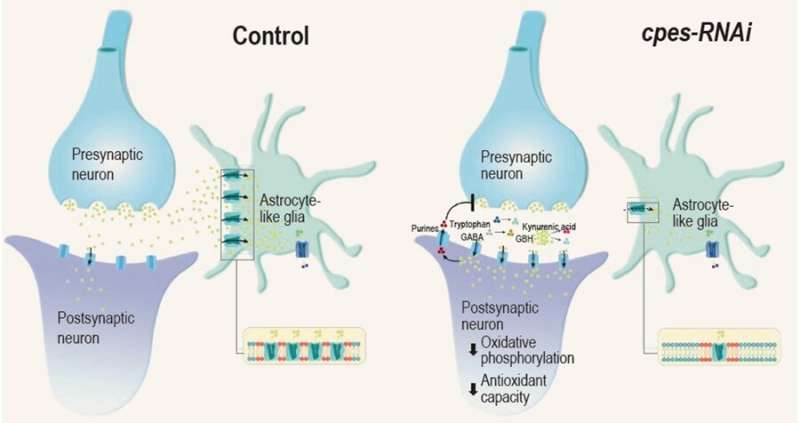Endogenous ceramide phosphoethanolamine modulates circadian rhythm and longevity in Drosophila

The circadian clock entrains rhythmic patterns in behavioral and physiological processes to temporally coordinate systemic metabolism with the rising and setting of the sun. In previous investigation on human subjects, sphingomyelins (SMs) exhibited strong rhythmicity on an individual basis. However, the mechanistic connection between SM and circadian regulation remains unclear.
In a recent study published in Nature Science Review, Prof. Shui Guanghou's team from the Institute of Genetics and Developmental Biology (IGDB) of the Chinese Academy of Sciences presented new findings pertaining to how endogenous ceramide phosphoethanolamine modulate circadian rhythm and longevity via neural-glial coupling in Drosophila.
The researchers investigated whether ceramide phosphoethanolamine (CPE, structural analog of SM) affects the maintenance of circadian clock by employing the CRISPR/Cas9 technology to construct various mutants of genes implicated in the biosynthesis and metabolism of CPE in Drosophila.
They confirmed that CPE was essential for the maintenance of circadian rhythm and that CPE deficiency could lead to rhythm disorders and shorten lifespan, while increasing CPE or SM restored the rhythm and greatly extended lifespan of Drosophila. Multi-omics analyses revealed that the reduction of CPE led to abnormal glial glutamate signaling and disruption of circadian rhythms in Drosophila.
These findings demonstrate that CPE or SM production in astrocyte-like glia (ALG) modulates circadian rhythm in locomotor activity and lifespan in Drosophila. It would be very interesting and valuable to further study whether maintaining levels of CPE or SM in ALG could extend the lifespan of mice or primates.
More information: Xiupeng Chen et al, Endogenous ceramide phosphoethanolamine modulates circadian rhythm via neural-glial coupling in Drosophila, National Science Review (2022). DOI: 10.1093/nsr/nwac148
Provided by Chinese Academy of Sciences





















